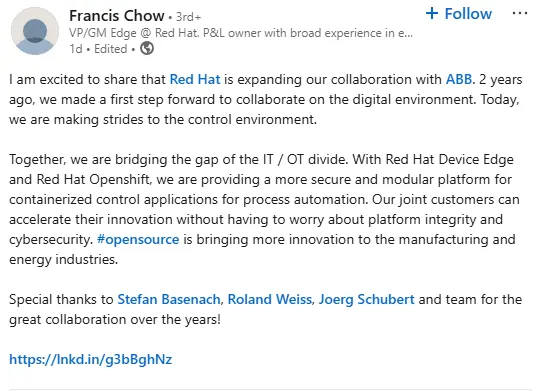Boston, MA — May 2025 — Red Hat, an IBM company, made a series of major announcements at its annual Red Hat Summit this week, unveiling new tools and strategic partnerships aimed at accelerating AI adoption across hybrid cloud and edge computing environments.
The leading concept behind this vision is the Red Hat AI Inference Server—a pre-built, fully supported container designed to deploy and serve generative AI models on any hardware or in any environment. The tool reflects Red Hat’s broader ambition to extend its hybrid cloud leadership into the AI domain.
“Customers tell us their focus is on getting AI quickly into production,” said Brian Stevens, Red Hat’s Senior Vice President and AI CTO. ““AI Inference Server conveys faster, money-saving and scalable model deployments in the hybrid cloud.”
The AI Inference Server is available as a standalone product or can be integrated into Red Hat Enterprise Linux AI (RHEL AI) and Red Hat OpenShift AI. Red Hat also announced llm-d, an open-source Kubernetes-native platform for distributed inference, which supports large language models (LLMs) using vLLM and AI-aware routing.
Meanwhile, Red Hat brought in OpenShift Lightspeed, a generative AI assistant built into the OpenShift console, which is now within reach. The assistant provides natural language guidance for IT tasks such as troubleshooting and resource investigation, and supports models from OpenAI, Microsoft Azure OpenAI, and IBM WatsonX. A preview of its “Bring Your Own Knowledge” feature will allow enterprises to customize the assistant’s responses based on internal documentation.
Red Hat launched Edge Manager
In the edge computing space, Red Hat launched Edge Manager as a technology preview. This centralized tool is created to manage fleets of edge devices using policy-based deployment and secure protocols for communication. The tool is particularly geared toward industries like retail and manufacturing, where infrastructure is distributed and on-site IT resources are limited.
“Edge Manager is designed to help manage tens of thousands of devices with policy-based control, even in environments lacking on-site IT expertise,” said Francis Chow, Vice President and General Manager of Edge at Red Hat.

The company also deepened its partnership with Advanced Micro Devices (AMD) to optimize AI and virtualization workloads. Red Hat’s platforms now assist AMD Instinct GPUs and Epyc CPUs, with OpenShift AI and RHEL AI certified for AMD’s MI300X GPUs. Red Hat and AMD endow the vLLM open-source project to improve multi-GPU performance and inference scalability.
The announcements mark a strategic evolution for Red Hat, aligning its open-source platforms with the rapid deployment needs of modern AI workloads and the operational demands of edge computing.
“We realized that to be a platform company, we have to enable customers for what’s coming next,” said Red Hat CEO Matt Hicks. “We’re building a future that’s open, scalable and ready for the next generation of AI.”
The company emphasized that its approach is designed to avoid vendor lock-in, offering tools that are adaptable, secure, and optimized for both legacy systems and emerging AI technologies.